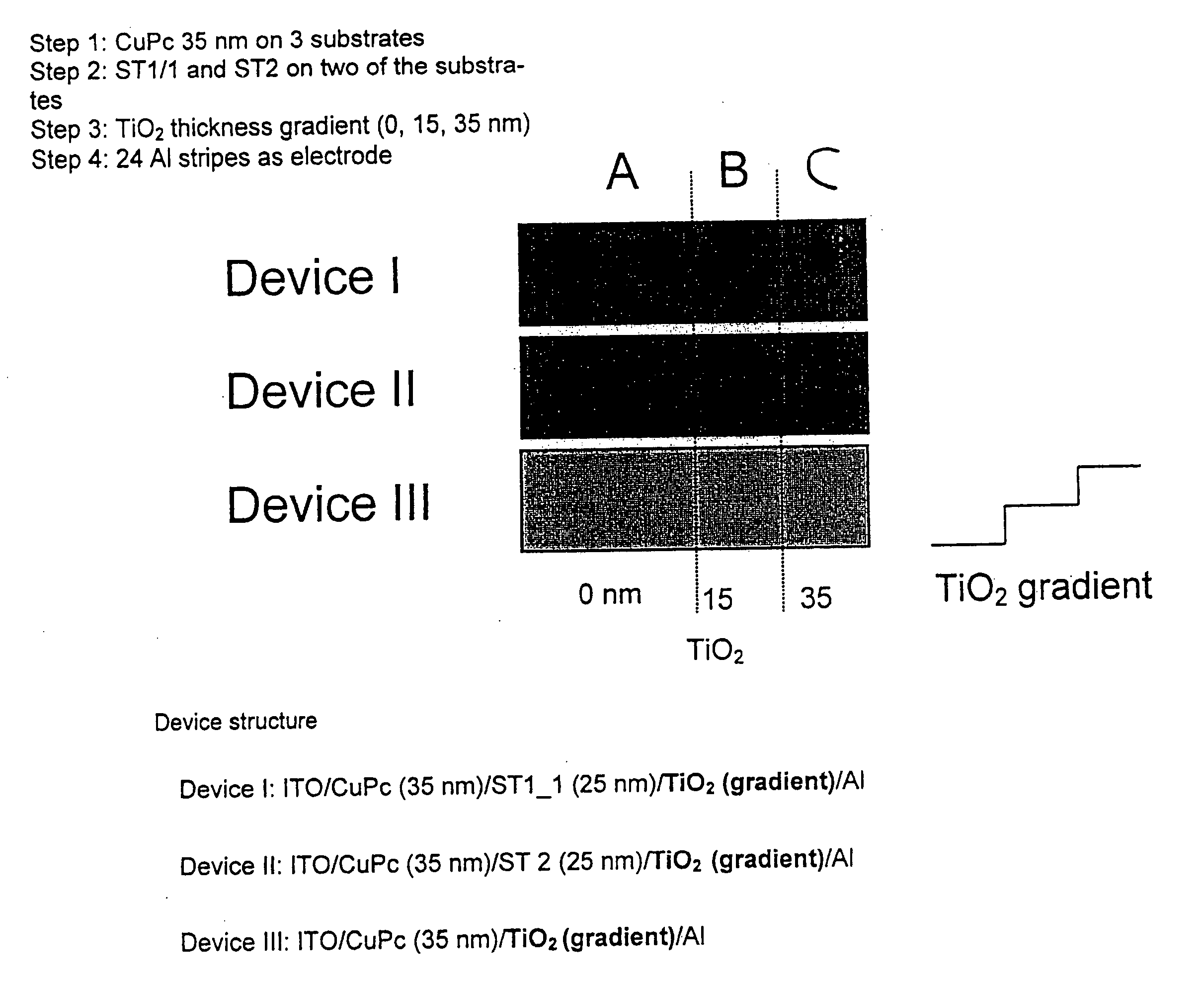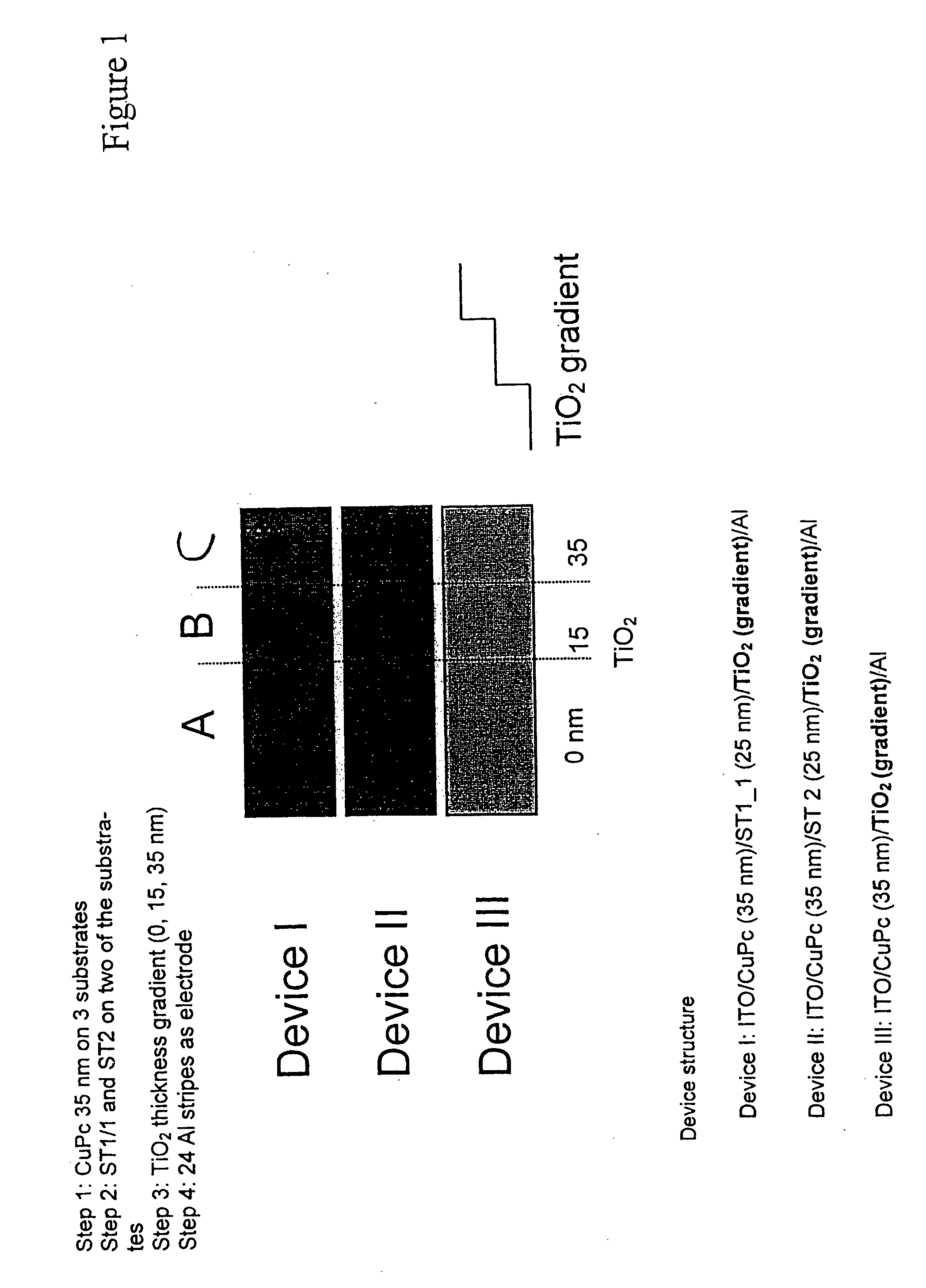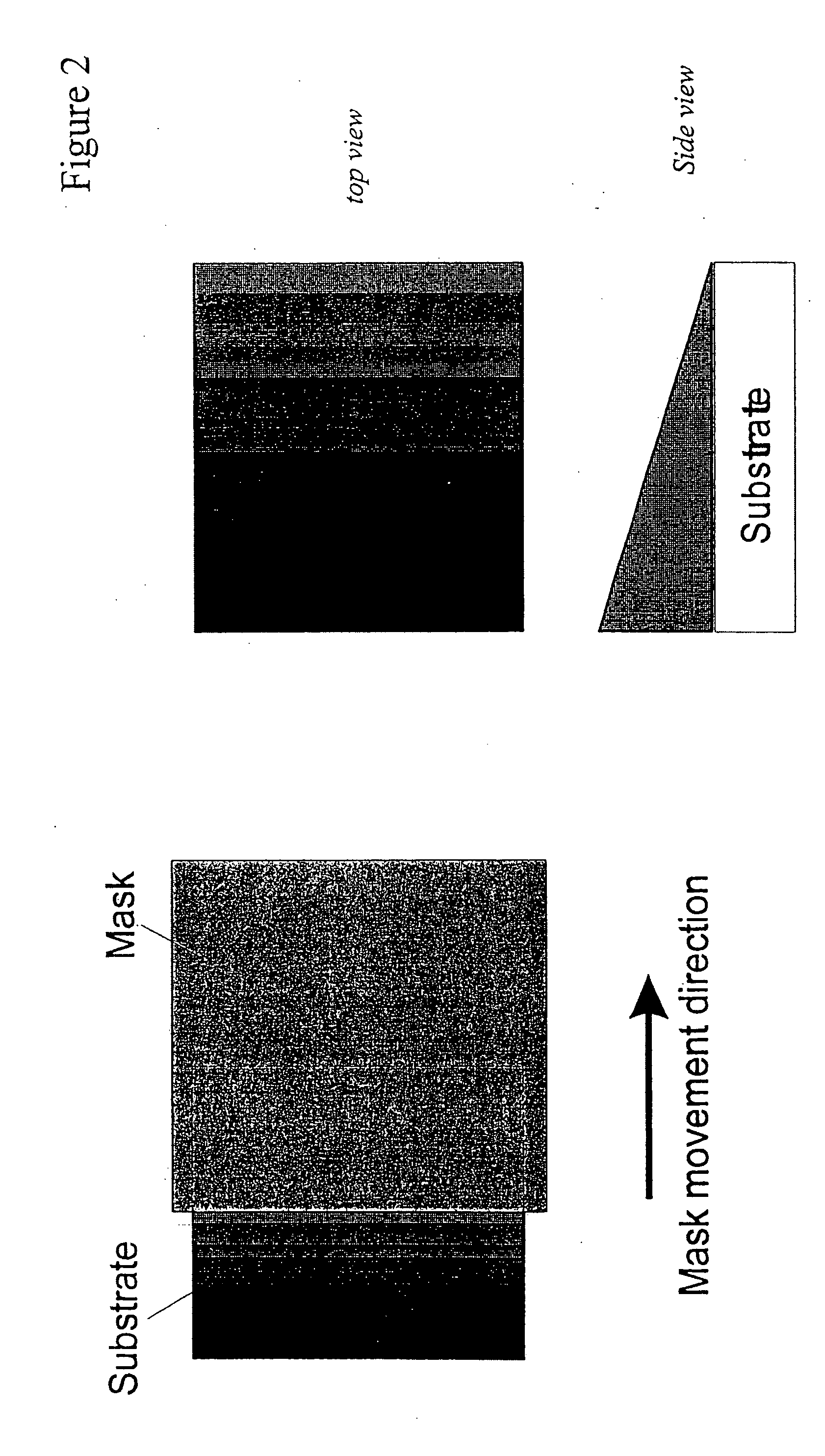Hybrid solar cells with thermal deposited semiconductive oxide layer
a solar cell and semi-conductive technology, applied in the field of hybrid solar cells with thermally deposited semi-conductive oxide layers, can solve the problems of reduced long-term stability, difficult production, and high construction cost of devices, and achieve the effect of sufficiently efficient and cheap production
- Summary
- Abstract
- Description
- Claims
- Application Information
AI Technical Summary
Benefits of technology
Problems solved by technology
Method used
Image
Examples
example 1
Preparation of a Cell According to the Invention
[0054] In a first step according to FIG. 3, commercially available EM coated glass (1) is used as starting material. Suited EM materials are all materials, which can be used to create transparent electrodes, like indium tin oxide, fluorine doped tin oxide, zinc oxide or doped zinc oxide. Further, an evaporated metal electrode (EM layer) selected from metals, like Au, Al, Ca or Mg, or combinations of metals like Al / Li, Mg / Ag, and the like can be used. In order to allow a proper function of the solar cell according to the invention, at least one of the EM-layers should be a TCO.
[0055] The starting material is then coated with a constant thickness layer of HTM (2), which can be applied by vapor deposition, resulting in a HTM-coated device substrate / TCO / HTM (3). Suitable HTM materials can be selected from the group of phthalocyanine and derivatives thereof (with or without a central atom or group of atoms), metal-free and metal containin...
example 2
Characteristics of a Cell Prepared According to the Invention
[0070] The hybrid organic solar cell produced according to example 1 was tested for its current-voltage characteristics and light intensity dependence of Isc and Voc. An Oriel 75W xenon short arc lamp with a water filter, a 345 nm sharp edge filter, a mirror and a PP diffuser was used as the light source. Current-voltage characteristics were measured with an SMU Keithley 2400, an IEEE-card together with a self-developed Labview measuring program (I [A], V [V], Idens [mA / cm2], FF [%], Pmax [mW / cm2], η [%]. Standard measurement parameters were: ambient conditions, 60 mW / cm2 to 100 mW / cm2, a cycle of 0 V to −0.1 V to +1.0 V (illuminated and dark), a 5 mA step size and 3 seconds delay time. The results of the measurements are graphically depicted in FIGS. 5 and 6 and listed in Tables 1 and 2, below.
TABLE 1Current-voltage characteristicsDeviceIsc [mA / cm2]Voc [mV]FF [%]η [%]A (0 nm TiO2)1.86142057.60.75B (15 nm TiO2)2.8164404...
PUM
 Login to View More
Login to View More Abstract
Description
Claims
Application Information
 Login to View More
Login to View More - R&D
- Intellectual Property
- Life Sciences
- Materials
- Tech Scout
- Unparalleled Data Quality
- Higher Quality Content
- 60% Fewer Hallucinations
Browse by: Latest US Patents, China's latest patents, Technical Efficacy Thesaurus, Application Domain, Technology Topic, Popular Technical Reports.
© 2025 PatSnap. All rights reserved.Legal|Privacy policy|Modern Slavery Act Transparency Statement|Sitemap|About US| Contact US: help@patsnap.com



